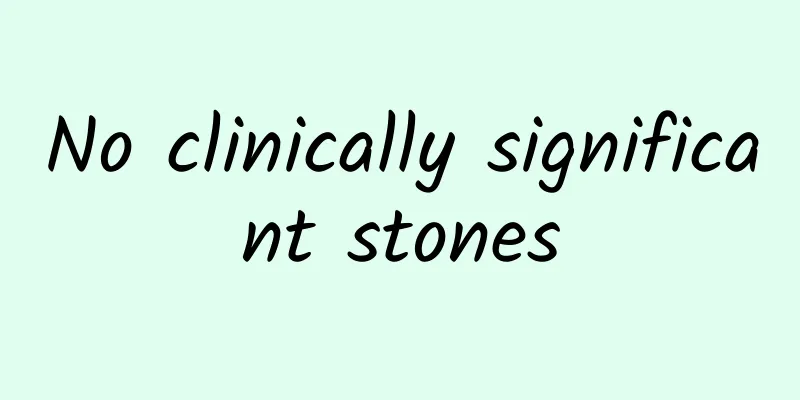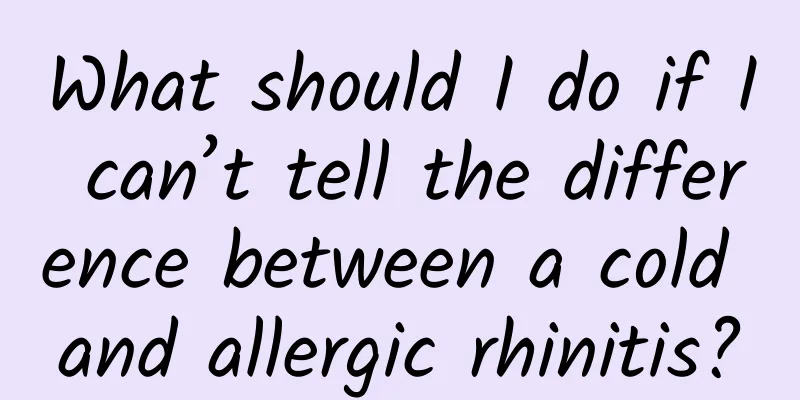No clinically significant stones

|
This is the 4210th article of Da Yi Xiao Hu Among patients with kidney stones, there are quite a few with small stones. The diameter of these stones is generally ≤4mm. They are painless, have no visible hematuria, and have no urinary tract irritation symptoms such as frequent urination, urgency, and pain caused by urinary tract infection. These stones are often found during routine physical examinations. These stones are called clinically insignificant stones. Clinically insignificant stones are also common in residual stones after extracorporeal shock wave lithotripsy, percutaneous nephrolithotomy, or ureteroscopy, as well as asymptomatic calyceal diverticulum stones. What should we do with such stones? Oral stone removal medication For small stones without clinical significance, oral stone removal drugs can certainly be chosen for treatment. Currently, most of the stone removal drugs sold on the market and commonly used in clinical practice are Chinese patent medicines. The main ingredients of these Chinese patent medicines are Centella asiatica, Lygodium japonica, Plantago, Gastrodia elata, Poria, Chicken gizzard lining, Corn silk, Walnut kernel, etc., which have diuretic and stone removal effects. Traditional Chinese medicine contains the rich experience and theory of the Chinese people in preventing and treating diseases for thousands of years. Practice has proved that these Chinese medicines can increase the stone removal rate, reduce the surgery rate, and relieve hydronephrosis. Exercise and body position to remove stones After confirming the diagnosis, some stone patients choose to exercise more, such as jumping, running, playing badminton, etc., thinking that this can promote the discharge of stones. But in fact, the corresponding activity method should be selected according to the location of the stone. Otherwise, it will not only be detrimental to the discharge of stones, but will aggravate the condition. (1) Upper renal calyx and ureteral stones: you can jump on the spot or go down the stairs, or you can let the patient tiptoe first and then land on the heel, using the impact force when the heel lands to promote the stone to move down. (2) Renal middle pole stones: it is advisable to lie on the healthy side, and tap the kidney area appropriately to promote stone discharge. (3) Lower renal calyx stones: you can perform postural stone discharge, that is, let the patient take an inverted or hip-knee position (prone on the bed, buttocks raised, head low) to guide the discharge of stones. It should be noted that patients should take activities that they can do, and exercise therapy should be suspended when renal colic is severe. Extracorporeal physical vibration stone removal——Made in China Clinically, passive stone removal methods such as oral Chinese herbal medicine, exercise, and body position are often used. The time of stone removal is uncertain and the effect of stone removal is also uncertain. The external physical vibration lithotripsy (EPVL) machine is an active stone removal device first invented in my country, which has created a new idea for the transformation of clinical urinary stone removal from passive to active stone removal. It adopts multi-directional physical simple harmonic vibration inertial guidance technology, uses a multi-directional guided resonance excitation handle to provide axial promotion, and adjusts the posture of the device to guide the stones in the gap to slide along the cavity. EPVL is mainly used for kidney or ureteral stones <6mm, extracorporeal shock wave lithotripsy, and residual stones after various laparoscopic minimally invasive treatments. It has the advantages of active stone removal, faster stone removal, high clearance rate, and safety and reliability. Litholysis The so-called lithotripsy is a treatment method that uses drugs to dissolve stones, reduce their size, or prevent them from growing larger. After the diagnosis is confirmed, the stones can be dissolved by oral medication. There are also various methods to place a catheter in the urinary tract near the stone, and inject stone-dissolving drugs through the catheter to achieve the purpose of dissolving the stone by making the drugs directly contact the stone. Clinically, oral drugs are mainly used to treat uric acid stones and cystine stones. At present, lithotripsy is far from perfect, and the time for dissolving stones is also very long. There are not many stones that can be truly dissolved by drugs. When other methods of treating urinary stones have achieved good results, it is no longer necessary to use catheter injection to dissolve stones. Is it a big deal if you don’t get treatment? So, is it important if small stones with no clinical significance are not treated? If stones cannot be excreted from the body for a long time, some problems may occur, such as renal colic (stones are excreted and obstruct the ureter), hematuria (stones rub against the mucosa), stone growth (may require surgical treatment in the future), urinary tract infection (stones exist as foreign bodies), and impaired renal function (long-term obstruction stays in a certain part of the urinary tract). The most serious of these is renal damage. As the pressure in the urinary tract above the obstruction gradually increases, the renal tissue becomes ischemic, degenerates, and necrotizes, and renal function gradually decreases. Observation and follow-up is of course an option, because both oral stone-removing drugs and other treatments have their pros and cons. During observation and follow-up, it is necessary to regularly check B-ultrasound, urine routine, etc. to understand changes in stone size, whether there are complications in the kidneys, etc. As long as there are no obvious symptoms and no impact on renal function, you can choose to observe and follow up. The bottom line is that the damage to renal function cannot be aggravated. Author: Shanghai Fifth People's Hospital Affiliated to Fudan University Wang Wei, deputy chief physician |
<<: How much do you know about breastfeeding?
Recommend
Toothbrushes and showerheads: The hidden world of viruses
Author: Duan Yuechu and Huang Yanhong In our dail...
Is ovarian cyst puncture painful?
There are many people suffering from ovarian cyst...
What to do if you have stomach pain after giving birth
After giving birth, a woman's body is already...
How to restore uterine enlargement to normal?
An enlarged uterus is very familiar to many women...
Eating foods such as fermented rice dumplings during menstruation can help enlarge breasts
Many women pursue full breasts, but not all women...
Will people with polycystic ovary experience bloating in the right abdomen?
The polycystic ovary that people often talk about...
Revealing the facial features of these five types of women who are destined to be beautiful but unlucky!
Yao Beina's early death made many fans sad an...
Osteochondrosis of the Femoral Head Epiphysis in Children: The Truth You Must Know
Author: Xiao He, attending physician at Nanfang H...
What causes blood in urine? Learn about the 6 main reasons
Blood in urine, medically known as "hematuri...
How to replenish your body after taking birth control pills
Many couples nowadays want to enjoy a period of t...
How many milligrams of iron should pregnant women take every day
Iron is very important for both normal women and ...
Precautions for acne during pregnancy
In daily life, many expectant mothers will encoun...
Drink cold water during menstruation
Women often experience dysmenorrhea during their ...









